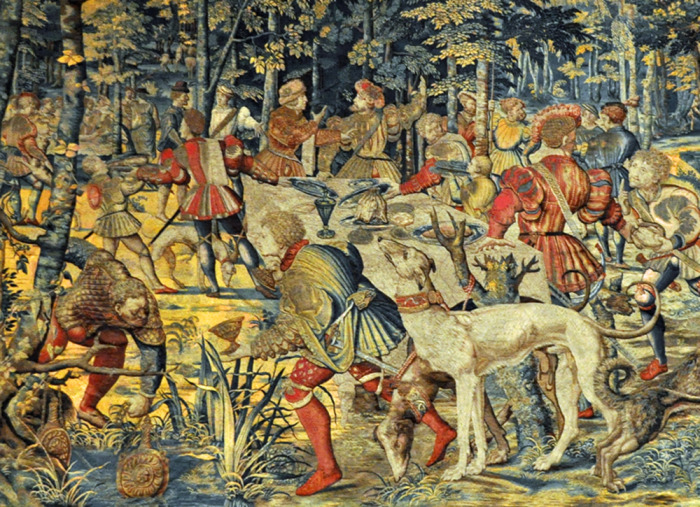 Van Orley’s The Month of June is part of a series of tapestries called The Hunts of Maximilian [Les Chasses de Maximilien. The June episode depicts an elaborate Orley halt on the hunt [halte de chasse]at which Archduke Maximillian (later Emperor of Austria) is...
Van Orley’s The Month of June is part of a series of tapestries called The Hunts of Maximilian [Les Chasses de Maximilien. The June episode depicts an elaborate Orley halt on the hunt [halte de chasse]at which Archduke Maximillian (later Emperor of Austria) is...
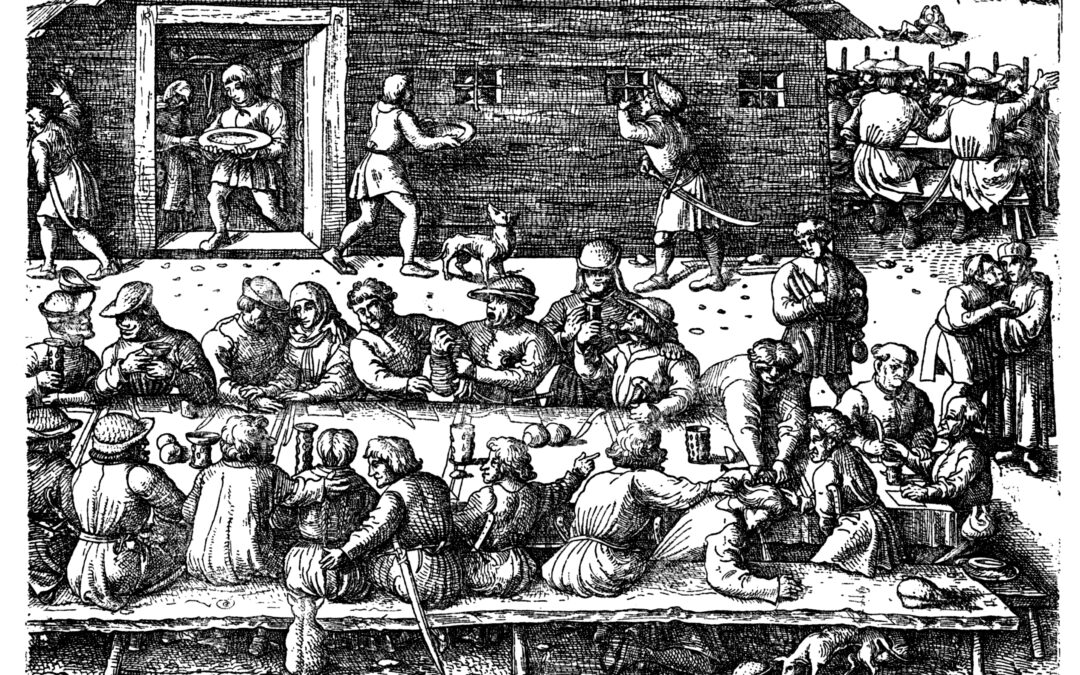 Hopfer’s Peasants at Table at a Rustic Festival [or Tafelnde Bauern beim dorflichen Fest or Peasants at Table at a Rustic Festival, also called a kermesse, may celebrate a patron saint, though in this instance, it seems secular, most likely, a celebration of spring....
Hopfer’s Peasants at Table at a Rustic Festival [or Tafelnde Bauern beim dorflichen Fest or Peasants at Table at a Rustic Festival, also called a kermesse, may celebrate a patron saint, though in this instance, it seems secular, most likely, a celebration of spring....
 Veronese’s Moses Rescued from the Water is a fête champêtre, and Pharaoh’s daughter enjoys alfresco entertainment. Surrounded by courtiers and ladies waiting, Pharaoh’s daughter’s pleasantries are interrupted when Miriam presents her with the infant Moses. The scene...
Veronese’s Moses Rescued from the Water is a fête champêtre, and Pharaoh’s daughter enjoys alfresco entertainment. Surrounded by courtiers and ladies waiting, Pharaoh’s daughter’s pleasantries are interrupted when Miriam presents her with the infant Moses. The scene...
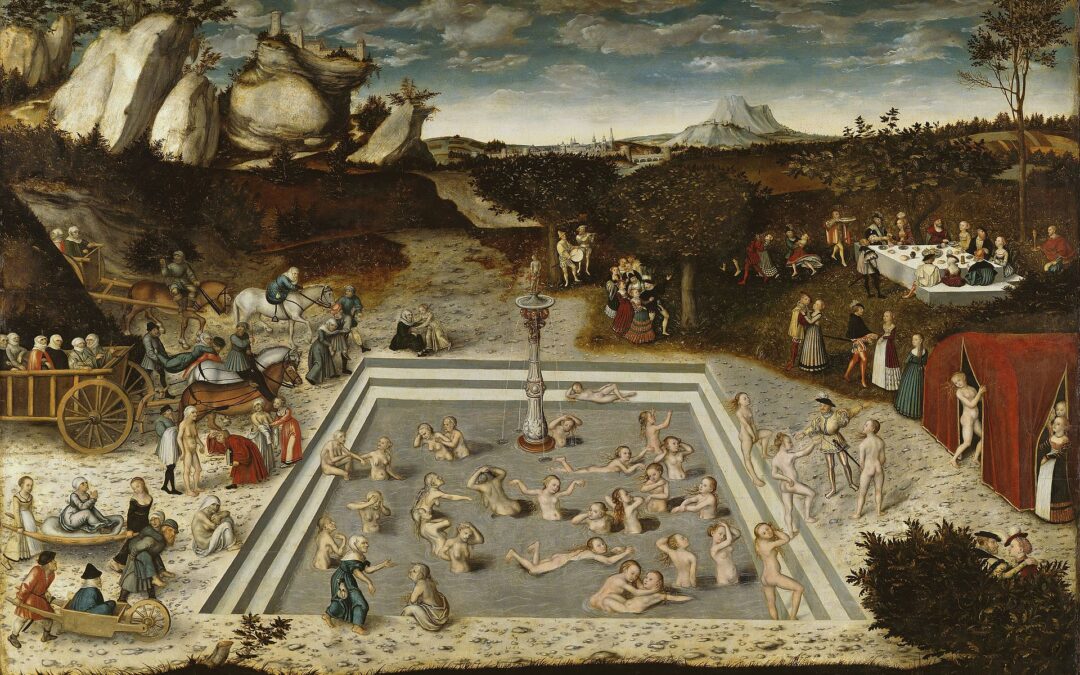 Cranach’s paintings often conflate the spiritual and erotic, particularly The Fountain of Youth and The Golden Age, both completed in 1546. The subjects seem pagan, but his friendship with Martin Luther deeply influenced Cranach. The Fountain of Youth...
Cranach’s paintings often conflate the spiritual and erotic, particularly The Fountain of Youth and The Golden Age, both completed in 1546. The subjects seem pagan, but his friendship with Martin Luther deeply influenced Cranach. The Fountain of Youth...
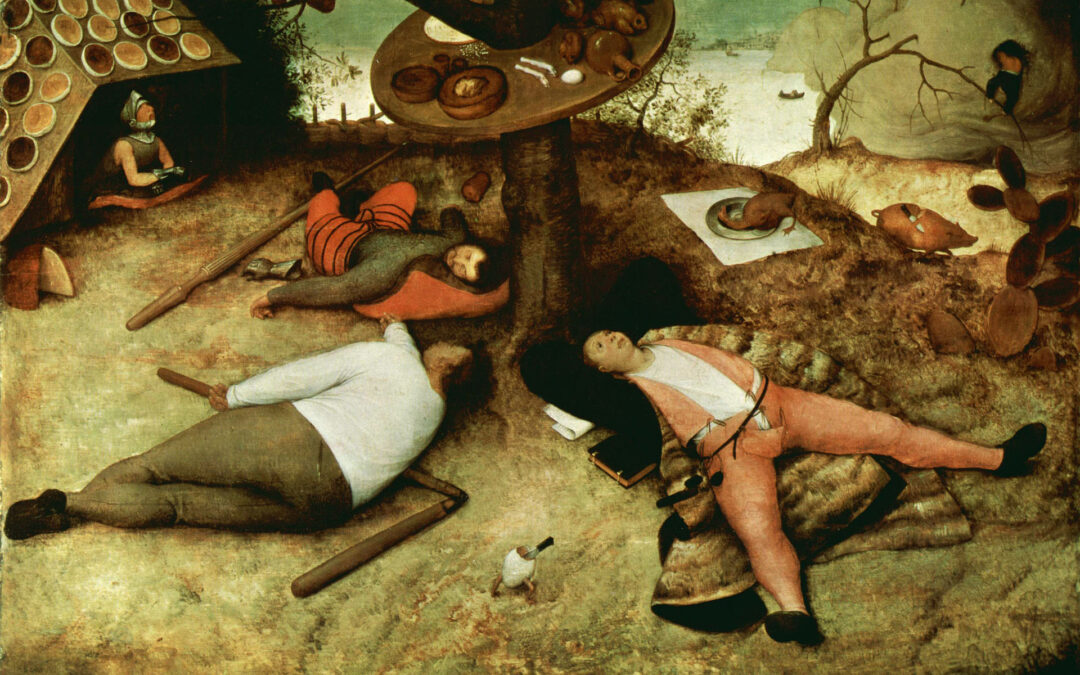 Bruegel the Elder’s The Land of Cockaigne, aka Het Luilekkerland, makes you think it’s a picnic. Not. It’s a satirical look at Cockaigne, a mythical place where it’s always spring and never winter, in which life is all play and no work,...
Bruegel the Elder’s The Land of Cockaigne, aka Het Luilekkerland, makes you think it’s a picnic. Not. It’s a satirical look at Cockaigne, a mythical place where it’s always spring and never winter, in which life is all play and no work,...
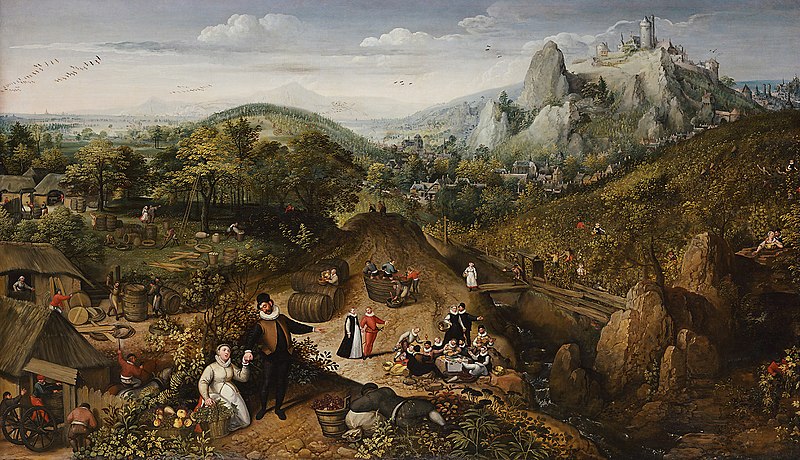 Valckenborch must have loved dining, food, and wine. His paintings are filled with depictions of meats, fish, and fruits, so he might be called a painter of feasting. His calendar paintings, such as the one celebrating October’s bountiful grape harvest, include an...
Valckenborch must have loved dining, food, and wine. His paintings are filled with depictions of meats, fish, and fruits, so he might be called a painter of feasting. His calendar paintings, such as the one celebrating October’s bountiful grape harvest, include an...
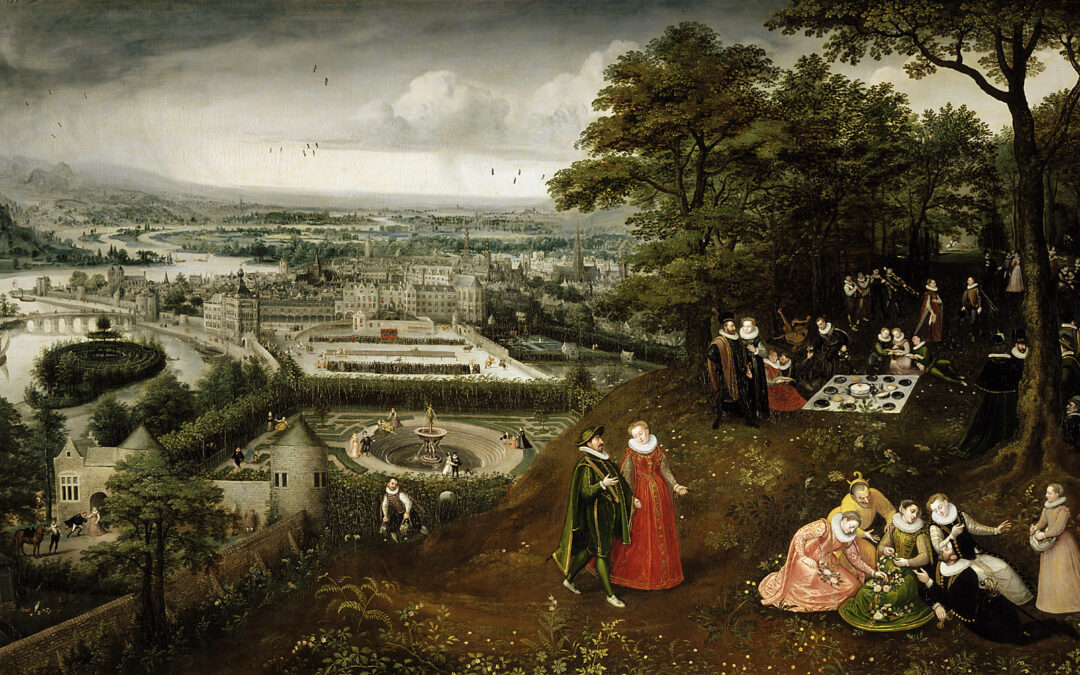 Valckenborch’s Spring, aka Frühlingslandschaft (Mai), depicts the new season arousing a desire for revelry after winter’s confinement. It’s part of a series of calendar paintings celebrating the months of the year and appropriate seasonal activities. Though, in this...
Valckenborch’s Spring, aka Frühlingslandschaft (Mai), depicts the new season arousing a desire for revelry after winter’s confinement. It’s part of a series of calendar paintings celebrating the months of the year and appropriate seasonal activities. Though, in this...
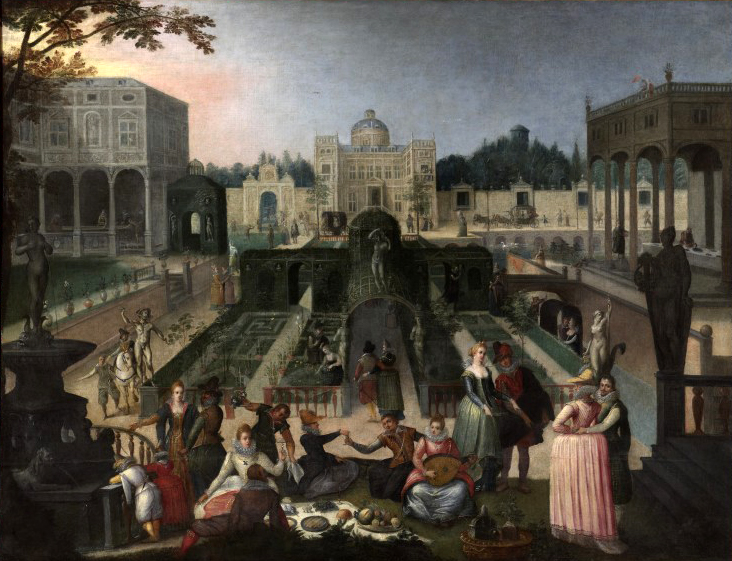 Feast In The Park Of The Duke Of Mantua or Fête dans le Jardin du Duc de Mantoue is picnicky but not a feast. The curators of the Musée des Beaux-Arts probably assign the title. It is a garden of lovers dining alfresco in an imaginary architectural setting. The...
Feast In The Park Of The Duke Of Mantua or Fête dans le Jardin du Duc de Mantoue is picnicky but not a feast. The curators of the Musée des Beaux-Arts probably assign the title. It is a garden of lovers dining alfresco in an imaginary architectural setting. The...
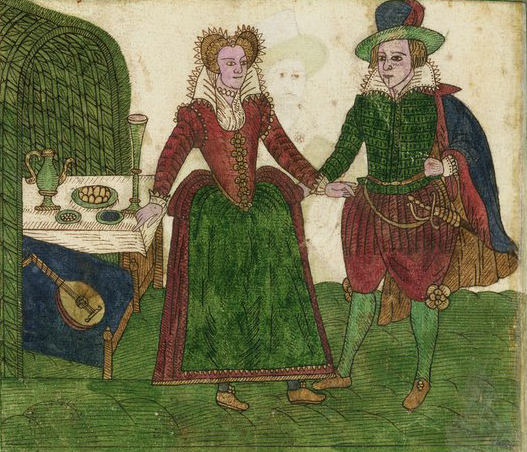 Trevelyon’s Miscellany is a meticulously illustrated compendium of 1608. It’s stocked with a calendar, scenes from the Bible, current events, court, political figures, costumes, fabric designs, games, dances, etc. It’s among the marvels of bookcraft...
Trevelyon’s Miscellany is a meticulously illustrated compendium of 1608. It’s stocked with a calendar, scenes from the Bible, current events, court, political figures, costumes, fabric designs, games, dances, etc. It’s among the marvels of bookcraft...
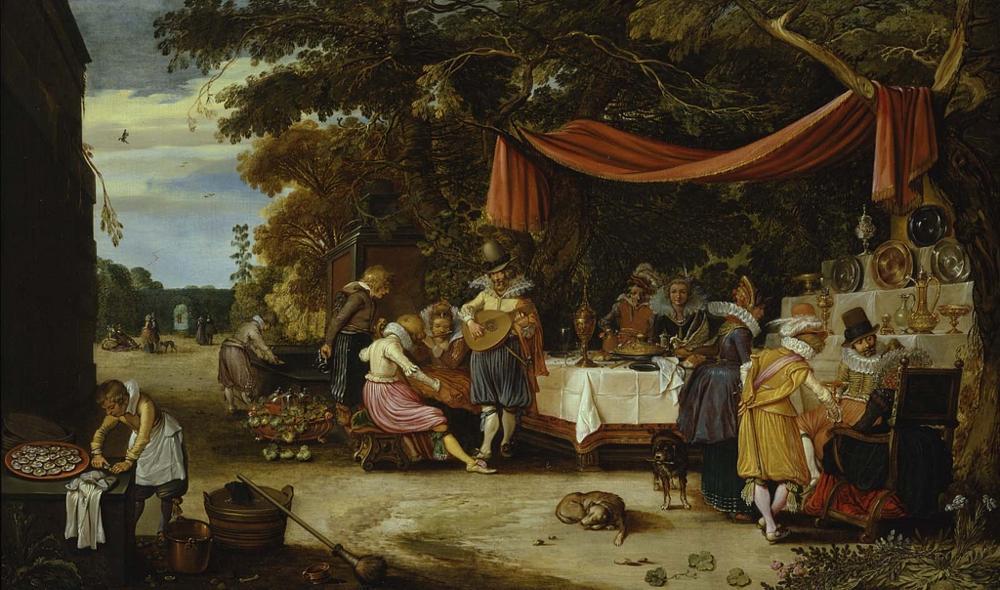 Van de Velde’s reputation is now based on his naturalistic landscape. But he was in demand among the affluent Amsterdam community, for whom he painted many scenes of their parties, especially garden parties, of which An Elegant Company in a Garden is an exemplar. The...
Van de Velde’s reputation is now based on his naturalistic landscape. But he was in demand among the affluent Amsterdam community, for whom he painted many scenes of their parties, especially garden parties, of which An Elegant Company in a Garden is an exemplar. The...











